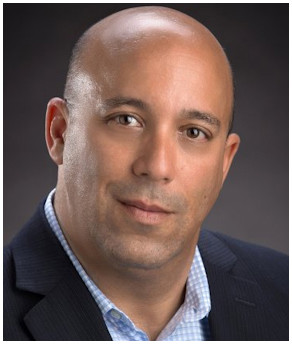How long do you have to sue for medical negligence?
Not very long. In fact, the time limit for filing suit on a medical negligence case is as short or shorter than any other lawsuit time limit! If you want to sue your house painter for breach written contract, no rush. You have eight years to file suit. If you want to sue your neighbor for trespassing on your property, relax. You have four years. But if you want to sue your doctor for hurting you through carelessness, you need to hurry.
The One Year Time Limit, the Discovery Rule, and the Termination Rule
Under Ohio law, a lawsuit for medical negligence must be filed within one year of the time the “cause of action accrues.” When a medical negligence “cause of action accrues” can be difficult to determine sometimes. It may be when the medical mistake took place. It may be sometime later, when the patient should have realized that some injury she suffered might have been due to a medical mistake. This is sometimes called the “Discovery Rule.” If the patient has a continuing doctor-patient relationship with the doctor, the “cause of action” might not “accrue” until after the relationship has ended. This is referred to as the “Termination Rule.”
Because it can be very hard to figure out when the one year period begins to run, it is critical to retain an experienced medical negligence attorney as soon as you learn that you have suffered an injury and suspect it may be related to medical care you received.
Some Exceptions to the One Year Time Limit – Children and those of “Unsound Mind”
There are a couple of exceptions to the one year time limit. One exception is when the injury is suffered by a child (for example, a birth injury). An injured child has one year from the time he reaches majority (18) to file suit. Of course, the child’s parents can (and usually should) sue on the child’s behalf well before the child becomes an adult. Otherwise, memories of key witnesses may fade, and medical records may go missing or be destroyed. A second exception involves victims of medical negligence who are of “unsound mind” when the “cause of action accrues.” Invoking this exception can be tricky. Even if you think an exception applies to your case, it makes good sense to retain an attorney quickly, so that the attorney can advise you of the applicable time limit.
Extending the Time Limit
There is a way to extend the one year time limit, but it is fraught with potential pitfalls. Ohio law allows a one-time extension of up to 180 days, provided that a special, written notice is given to the potential defendants. This notice must be received by all potential defendants before the one year period expires. Extending the time limit this way is difficult. The patient must identify everyone who might be at fault for the injury, and he must be able to prove receipt of the notice. The law is very strict. If a notice is sent by certified mail and comes back unsigned or signed by someone else (like a co-worker or a family member), that is not good enough. The doctor can always claim she didn’t see the notice until after the time limit expired. Some doctors intentionally refuse certified mail, or they use secretaries or assistants to sign for everything, just to make it hard for patients to extend the time limit. Because of the pitfalls involved in extending the time limit, it is usually better to file suit within the one year time frame
The Statute of Repose
What happens when a patient is injured by medical negligence but has no idea she was injured or that her injury was related to medical care until years later? That question is addressed in Ohio by something called a “Statute of Repose.” Under this law, no suit for medical negligence may be brought after four years from the date of the negligence. Let’s say a surgeon performs an operation to remove a cancerous tumor but negligently leaves some of the tumor behind. The remaining tumor grows slowly, and five years later, the patient learns that the cancer has spread and that the surgeon missed a portion of the tumor. Because it is more than four years since the surgeon’s mistake, the patient is barred from filing suit, even though her cause of action did not “accrue” until she learned of the mistake.
The statute of repose is harsh. It can take away the right to sue before the patient has any reason to think that she was injured or that her injury has anything to do with a medical mistake.
There are four main exceptions to the four year, absolute bar to suit. The first two are the same as the exceptions to the one year rule: minors may sue on or before their 19th birthday, even if that is more than four years from the date of the medical mistake, and individuals of unsound mind need not sue until they regain their mental capacity. In addition, if a patient discovers an injury more than three years after the medical mistake but within four years, the patient has one year from the date of discovery to sue. Finally, if a foreign object is left inside a patient’s body by mistake, the patient has one year from the date she discovers (or should have discovered) the object to file suit, even if it is beyond four years.
Wrongful Death Time Limit: Two Years, No Extensions
When medical negligence results in injury and death, there are two claims that may be brought. The first claim is a medical negligence claim. That claim belongs to the injured patient, and it seeks compensation for the patient’s pain and suffering before death and for medical bills incurred. When the person dies, that claim “survives” the death and becomes an asset of the person’s estate. That’s why lawyers often refer to these claims as “survival” claims.
The second claim that arises when someone dies from medical negligence is a claim for wrongful death. A wrongful death claim is designed to compensate the family of the person who died. Compensation may be recovered for loss of support, services, companionship, consortium, care, assistance, attention, protection, advice, guidance, counsel, instruction, training, and education, as well as for the mental anguish of the decedent’s family.
The time limit for filing a wrongful death lawsuit is two years from the date of death. There are no exceptions to this rule, and there are is no way to extend the time limit.
It is important to understand that in cases where medical negligence results in both injury to the patient and death, two different time limits apply: the one year time limit for the survival action and the two year time limit for wrongful death. A good example is a case involving a delay in the diagnosis of cancer that results in a long and painful treatment course, followed by death. Typically, both claims are combined into a single lawsuit and filed together. But for this to work, the lawsuit must be filed within the shorter, one year time limit.
In other cases, it may make sense to skip the medical negligence claim and seek only wrongful death damages. An example might be where a patient with mild chest pain is sent home from an emergency room with little or no testing and who dies of a heart attack at home in his sleep that evening. There may be very little pain and suffering, but the wrongful death damages may be significant.
The Takeaway
The takeaway is this: Don’t try to figure out the time limits on your own. The time limits for filing suit against doctors and hospitals are short and can be confusing. Seek help from a qualified attorney as soon as you believe you or a loved one may have been seriously injured by a medical mistake.




